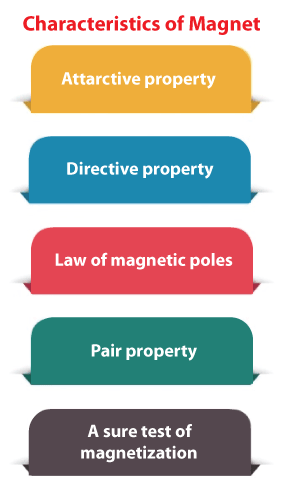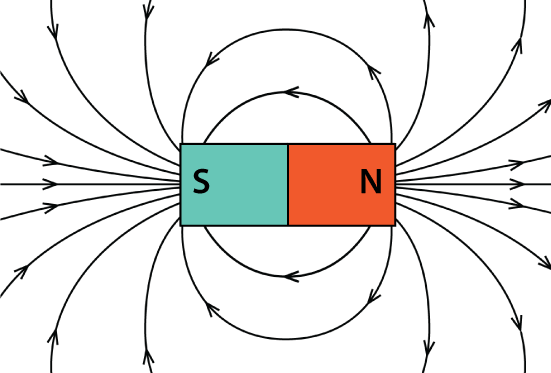List Of Properties Of Magnetic Lines Of ForcesAny object that attracts iron and creates a magnetic field around itself is called a magnet. All recognized metals and numerous compounds had been investigated for magnetization by the end of the nineteenth century and all were determined to have had some magnetic property. 
The property of diamagnetism, the term for materials that display a mild repulsion by both poles of a permanent magnet was perhaps the most frequent. When placed close to a magnet, some materials, such as chromium, demonstrate paramagnetism or the ability to produce weak magnetization. When the magnet is withdrawn, the magnetization vanishes. Characteristics of Magnet
A magnet has a few common attributes which are listed below: 1. Attractive property This attribute demonstrates that the magnetic strength somewhere at pole ends is high. 2. Directive property By holding the magnet in mid-air, this feature aids in determining which pole of the magnet is northern and southern. 3. Law of magnetic poles Similar poles oppose each other, whereas dissimilar poles attract each other, according to the rule of magnetic poles. 4. Pair property The Northern Pole and the Southern Pole may be discovered on both sides of a magnet even when it is divided in half. 5. A sure test of magnetization This test is used to determine whether a certain rod is magnetic or not by measuring the attraction or repulsion between the iron rod and the magnet. Magnetic Lines Of Forces
The magnetic lines of force are drawn around the magnet in the given figure, showing the region wherein the magnet's force is measured. The magnetic field is the way of referring to this area. Whenever an iron item is brought near a magnet but not within its magnetic field, the magnet will not pull the object towards it. On the other hand, when an item enters into the magnetic field, the magnet's force is activated and the object is pulled. The structure of these lines of force conveys information about the nature of the magnet's forces. The magnetic lines of force, also known as flux, go from the north to the south. Properties Of Magnetic Lines Of Forces
|
 For Videos Join Our Youtube Channel: Join Now
For Videos Join Our Youtube Channel: Join Now
Feedback
- Send your Feedback to [email protected]
Help Others, Please Share










